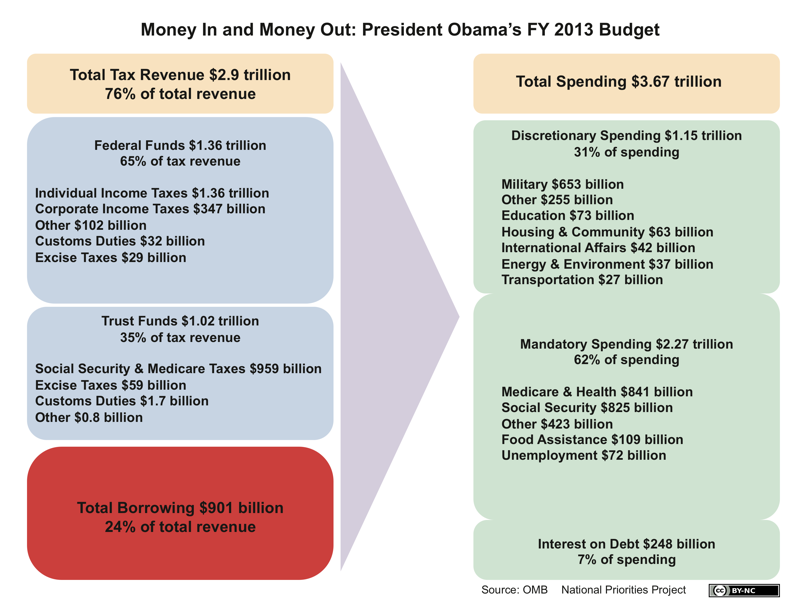Money In, Money Out
March 29, 2012 - Download PDF Version
This graphic shows where all the money in the federal budget comes from, and where it goes, in the president’s budget request for fiscal year 2013.

The different sources of tax revenue are grouped into federal funds and trust funds. Federal funds can be spent by Congress and the president on any government activity, while trust funds can only be used for certain programs. (For more on the different kinds of federal revenue, check out Federal Budget 101.) Federal funds are projected to account for 65 percent of all tax revenues in fiscal 2013, while trust funds will account for 35 percent.
But all tax revenues—federal funds plus trust funds—together will total only 76 percent of all the money spent by the federal government in fiscal year 2013. The rest will come from borrowing, according to projections in the president’s budget.
The federal government then will use those trillions of dollars of tax revenue and borrowed funds to pay for all federal programs. Thirty-one percent of all federal spending in fiscal 2013 will fund the discretionary budget, which includes the military as well as most domestic programs—such as education, scientific research, and the National School Lunch Program.
Most of the budget—62 percent—will fund mandatory spending. Social Security and Medicare together make up the majority of mandatory spending. (For more about the difference between discretionary and mandatory spending, see Federal Budget 101.)
Finally, 7 percent of the federal budget in fiscal 2013 will fund interest on the federal debt.